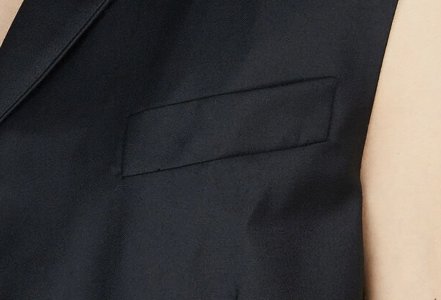I think the problem with most brands nowadays is they offer products that don't involve that much technique process to justify their ridiculous price. I remember
@yslforever commented about the technical side of Vaccarello's sheer silk knitted pieces that are only produced in small volumes due to technical difficulties, and I think it is actually a good sign of the industry because it is the true luxury that most brands fail us. With the quiet luxury trend championing minimalism and simplicity, designers and brands become more lazy and disillusioned to charge for a simple garment (the main production cost is probably the fabric) that the OG Jil Sander would never have. In general, the audacity to lower production costs as a result of simplified designs (also easily copied and produced by other brands) with less construction and sewing techniques along with the declining quality is definitely leading to the bursting of the luxury bubble now.
On the topic of the sheer outfits from YSL, the garments were produced only as prototypes in Anthony's studio, who dgaf at all with production. It was painful for everyone, because of the fabrics chosen for the show and because his current atelier does not have a full couture know-how.
But the production issue started immediately after with the pattern-making, which was head scratching, and that they had to redo multiple times, because the fabric choice conficted with the patterns. Some fabrics were too soft, too thin, too sheer, etc etc they went through 3 cycles of production designs, but they only could find 3 suppliers able to produce, one in France, one in Italy, one in Madagascar. But even there, seamstresses had to leave the sewing machine and do everything my hand. Hence the very limited production of this RTW runway pieces and they decided to jack the prices on the easier-to-produce other runway pieces like the feather bags and coats.
Anthony was scolded.
I recall another issue at Chanel where the lining of the skirts was hand-painted silk, by an artist, it was just fine for the duration of the show (fitting, dressing, the show, 2 - 3 of wearing max), so they decided to launch production by a hundred. Nearly all the pieces were returned because the hand-painted silk started to taint the legs of the clients after 3 hours, which they did not notice at the show. Returned and destroyed.
But those are extreme cases, which can justify the production cost of some RTW and they are more the exceptions than the rule, and aren't totally reflected in store prices.
What I understand from those articles is that the brands in the last decades doubled the price of their bestsellers (
+111% for the Galleria !!!) - and introduced mini-bags and wallets on chain at the price of the full-size bags were initially (
the Mini Galleria is at the price where the big Galleria was) - but realistically they did not really raised the number of items sold, and certainly not the quality, which has nose-dived. And don't get me started on the Puzzle Loewe revamp.
They are just reaping what they sow.







